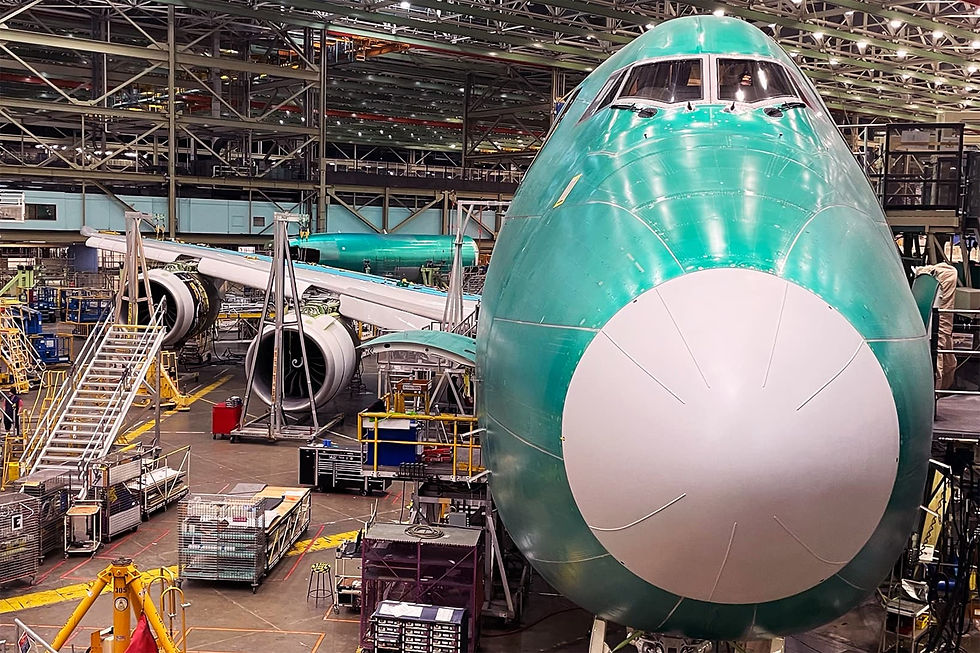By Garth Calitz

The aircraft designated for the President of the United States is more than just transportation; it represents power, security, and innovation. With serious discussions underway regarding a new aircraft for the President, it is essential to understand the implications for presidential travel and explore how new technologies can enhance the flight experience for the nation's leader. The USAF has ordered two Boeing 747-8s to serve as the next presidential aircraft, designated VC-25Bs and expected to enter service no earlier than 2026. The New aircraft were ordered by President Trump during his last term and due to COVID-19 delays he never expected to make use of them if re-elected in 2020.

Air travel has been crucial to presidential duties since Franklin D. Roosevelt took to the skies in the 1930s. He often flew on a Lockheed Electra, marking the early connection between the U.S. presidency and aviation.

In 1944, a C-54 Skymaster was converted for use as the first official presidential aircraft. Dubbed the "Sacred Cow" and operated by the Army Air Force, it carried President Franklin D. Roosevelt to the Yalta Conference in February 1945 and was used for another two years by President Harry S. Truman.

By 1958, the Boeing 707-120, VC-137 Stratoliner, became the first aircraft custom-built for the President. This aircraft operated until being replaced by the Boeing VC-25A, better known as "Air Force One". The development and upgrade of these aircraft reflect not just technological progress but also the evolving demands of presidential responsibilities.

Today's presidential aircraft are equipped with advanced communication systems, cutting-edge security features, and mid-air refuelling capabilities. For instance, the VC-25A provides secure communication systems that allow the President to interface with military leaders and government officials at any time.

There are compelling reasons for a new presidential aircraft. Firstly, the current fleet is showing its age, having been in operation since the late 1980s. Although well-maintained, it can't keep up with modern security protocols and communication demands. For example, while the VC-25A has advanced features for its time, the increasing sophistication of cyber threats highlights the need for more robust security systems.

Additionally, the push for fuel efficiency and sustainability in aviation cannot be overlooked. The modern aircraft design would integrate eco-friendly technologies of the four GE Aviation GEnx-2B turbofan engines contributing to greener travel practices. Given these factors, investing in a new aircraft designed specifically for presidential use is not only practical but also essential for modern governance.

When considering the features of a new aircraft for the President, both diplomatic and practical aspects must be addressed. The aircraft should ensure safety, be ready for operation, and effectively navigate diverse global situations.
Security Features
With evolving threats, the new aircraft will incorporate sophisticated cybersecurity measures to protect vital communications. For example, utilizing advanced encryption methods could significantly reduce the risks of interception. Physical security features could include reinforced structures capable of withstanding various threats, and countermeasures against missile attacks are crucial for the aircraft's protection.

Communication Capabilities
Constant communication with military and governmental leaders is essential during flights. A new aircraft would leverage the latest satellite communication technology, ensuring secure and instantaneous connections, regardless of the location. This includes being able to communicate securely from remote areas where ground communication might be compromised.

Comfort and Accessibility
Long flights require the utmost comfort, which is why luxury accommodations will be vital. The new design may include private sleeping quarters, a well-equipped conference room for high-level meetings, and a comprehensive catering facility to meet the dietary needs of the President and their staff.

Currently, the timeline for introducing the new aircraft is anything but certain. Early phases of discussion and planning are expected to last several years before committing to design and construction. Reports suggest the U.S. Air Force hopes to have the aircraft operational by mid-2026, which will involve rigorous testing to ensure all requirements are met before the aircraft is commissioned.
Investing in a new presidential aircraft carries significant economic implications. Developing this aircraft will require substantial financial resources, attracting numerous aviation companies eager to bid. This project has the potential to create thousands of jobs in aviation manufacturing alone. This alone can lead to regions with aerospace hubs experiencing economic growth as local businesses adapt to meet the needs associated with the new aircraft. For instance, recent military aircraft contracts have provided a boost to surrounding communities, illustrating how a new aircraft can also benefit local economies.

The focus on multiple factors, from security and communication to economic impact, reinforces a singular goal: providing the President with a reliable, secure, and efficient mode of transportation that meets the demands of modern leadership. The future of presidential air travel is thus not merely about an aircraft. It is about functioning effectively and safely in an increasingly complex global landscape.

























Comentarios